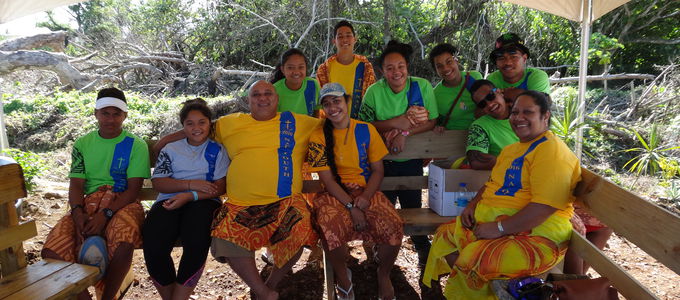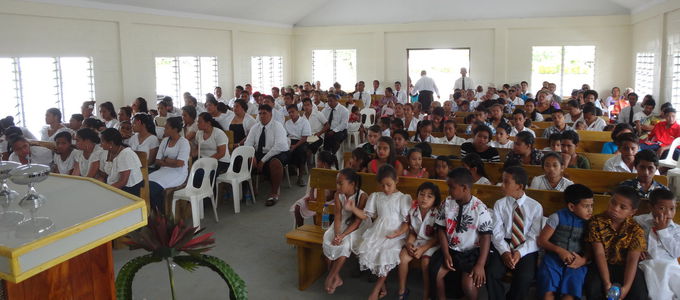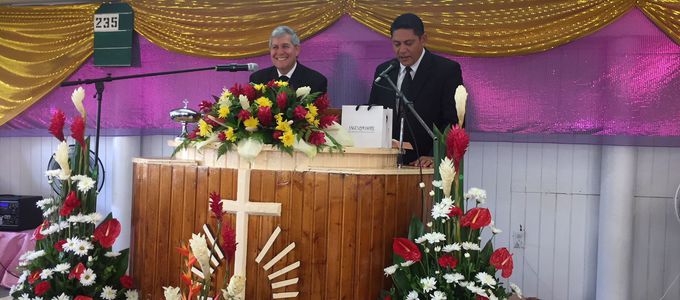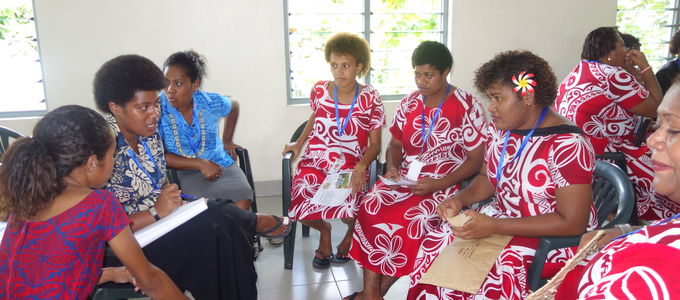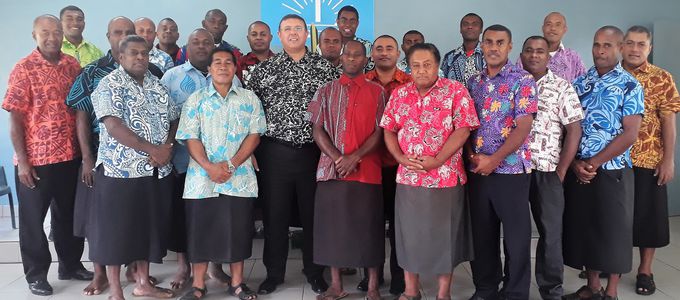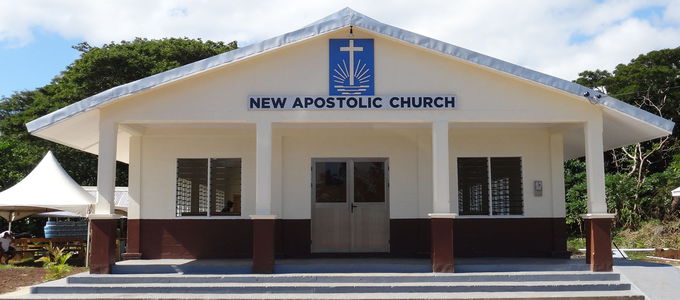
Two divine services—on the same day and at the same time, but in two different places: and the Chief Apostle does not need to tear himself in two in order to make this happen. All he has to do is travel backwards in time. Totally normal—for ministers in the South Pacific, that is.
Samoa, American Samoa, Fiji, and New Zealand: these are the stops along the upcoming trip of Chief Apostle Jean-Luc Schneider to the “Western Pacific” district, the working area of District Apostle Peter Schulte. In addition to divine services, the trip’s itinerary—which extends from 14-22 September 2019—also includes youth gatherings, musical events, and panel discussions. But beyond that, the tour also presents its own special elements and challenges.
Depart today, arrive yesterday
Sunday, 15 September 2019, 10:00 AM: The Chief Apostle will conduct a divine service in Apia, Samoa. And on Sunday, 15 September, 10:00 AM, the Chief Apostle will conduct another divine service in Pago Pago, American Samoa. In between, he will undertake a 30-minute flight that departs on 15 September—and lands on 14 September.
It is the International Date Line that is to blame for these temporal distortions: the earth is divided into 24 time zones. Starting from this special line that extends from north to south over Great Britain, the clocks to the east move ahead, and the clocks to the west move backward. On the exact opposite side of the globe, in the middle of the Pacific, the time zones collide again—with a 24-hour difference, in other words, a full calendar day.
For Peter Eves, this kind of thing is simply part of daily life. The District Elder often conducts minister meetings on Saturday, with a Sunday service to follow in Samoa—and then another minister meeting on Saturday, followed by a Sunday divine service on the same day in American Samoa. His working area encompasses ten congregations with roughly 1,200 members.
Characterised by music and fellowship
“Music is a very important part of the Samoan culture,” explains retired District Apostle Andrew Andersen, who is helping his successors with the preparations. “The musical talent of the members in the congregations is enormous. A normal choir practice could easily be confused with a concert performance. And fellowship is also a very important element in the Polynesian culture.” With a grin, the retired minister adds, “and the regular church fellowship feasts are not suited to anyone on a diet.”
Another thing that is typical for both island groups—whether the independent state in the west, or the American foreign territory in the east—is their Christian character: more than 98 percent of the population is Christian—and they also practise their faith, as District Apostle Andersen emphasises: on Sundays the churches are so full that public life, with the possible exception of bus traffic, practically comes to a standstill.
Religions and cultures in harmony
Things are rather different in Fiji. Just under 60 percent of the citizens of the 332 islands of Fiji consist of the original Melanesian population, while the other 40 percent are originally from India, though most have already lived here for four or five generations. So it is that Christians account for some two thirds of the population, and Hindus account for around one third of the overall population. But the cultures and religions coexist peacefully and harmoniously, explains Andrew Andersen.
The New Apostolic Church here numbers some 1,900 members in 17 congregations—overwhelmingly in the rural areas, but also distributed among both population groups. “The love of music is also a way of life amongst the Melanesian Fijians,” relates the retired District Apostle. “They have tremendous musical abilities, and music has a very prominent place in congregational life. Adults and children alike participate in the choirs.”
Ceremonies that come with a warning
The last stop is in Christchurch, New Zealand, where the Chief Apostle will conduct a central divine service that will be transmitted throughout the entire country and to Australia. Before that, however, he will have to participate in a ceremony which is not entirely without its challenges in the other island states. No, this is not the famous ceremony when guests are welcomed by placing the garland of flowers known as a “lei” around their necks. “The worst you might need to remember with that ceremony might be to not wear your best white shirt.”
District Apostle Andersen is actually thinking of the Kava ceremony. “If the Chief Apostle did not already know about this ceremony, I would have to warn him ahead of time.” In this ceremony, the guest of honour is given a ritually prepared drink made from the kava root, which tastes like pepper and leaves a certain numbness in the mouth. “I do not know any Europeans who truly enjoy the taste.” However, “this represents a great honour here.”






